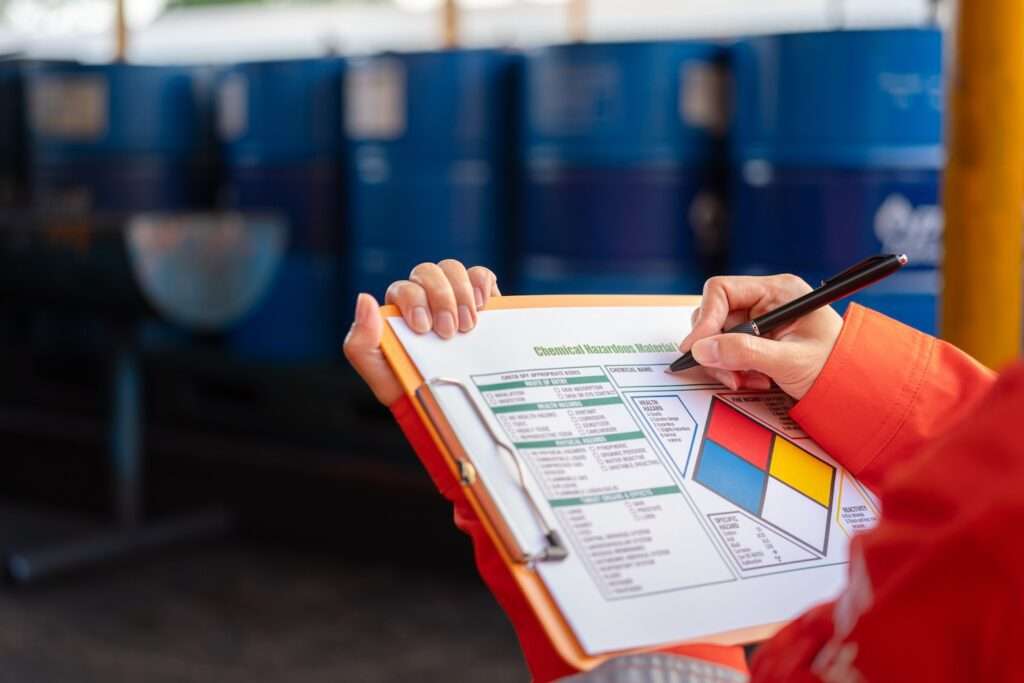Navigating global chemical compliance can be a daunting task—especially when it comes to Safety Data Sheets (SDSs). While the Globally Harmonized System (GHS) of Classification and Labeling of Chemicals was developed to standardize chemical safety information worldwide, the reality is far more fragmented. Each country implements GHS differently — some fully, others partially — and some not at all. This creates a patchwork of regulatory requirements that manufacturers and distributors must navigate in order to remain compliant.
For companies distributing chemical products across multiple markets, this means that a single SDS won’t suffice. Instead, SDSs must be tailored to align with the specific legal, linguistic, and formatting requirements of each jurisdiction. From language translations and hazard classifications to emergency contact protocols and formatting standards, every region has its nuances.
In this guide, we’ll clarify the key elements of SDS jurisdictional compliance, answer common questions, and show you how TotalSDS can help streamline and simplify your global SDS strategy.
Understanding SDS Jurisdictional Complexity
The United Nations introduced the GHS in 1992 with the goal of standardizing chemical classification and labeling globally. While many countries have adopted aspects of the GHS, they are not required to implement all components or updates. As a result, SDSs must be authored in accordance with the local regulations of the country where a chemical product is manufactured, used, or distributed.
Each jurisdiction has its own approach to hazard classification, SDS formatting, language requirements, and emergency contact details. Adding further complexity, the GHS is updated every two years, and jurisdictions adopt these revisions at different rates. Some may still be operating under older versions while others have moved on to newer ones.
Key Jurisdictions and Their Requirements
Understanding how individual countries implement SDS regulations is critical for maintaining compliance. While the GHS provides a global framework, each jurisdiction adapts it differently—sometimes with unique hazard classifications, required languages, and structural formats. Below is a breakdown of some of the most prominent regulatory environments around the world:
United States: Governed by OSHA, the U.S. mandates that SDSs be in English and comply with its Hazard Communication Standard (HCS), which aligns with GHS.
European Union: The EU enforces SDS compliance through REACH and CLP regulations, requiring documents to be submitted in local languages and formatted according to specific rules.
Canada: Canada uses WHMIS, which incorporates GHS principles but also requires bilingual (English and French) SDSs, among other regional specifications.
Other Regions:
- China: SDSs must be written in Simplified Chinese and comply with local hazard classifications.
- Latin America: Many countries follow GHS, but regional formats and enforcement levels vary.
Australia: Uses GHS-aligned standards with local adaptations.
Navigating chemical compliance can be daunting. Find more information on OSHA, REACH, GHS, and CLP and how to stay compliant.
SDS Jurisdiction FAQs
Navigating SDS compliance often leads to important and sometimes complex questions. Below are answers to some of the most frequently asked questions businesses encounter when working across multiple jurisdictions:
- If my SDS follows GHS, is it valid globally?
No. Even a GHS-compliant SDS must be tailored to the specific regulations of the jurisdiction where it is used. - Do SDSs have to be written in the local language?
Yes. Most countries require SDSs to be presented in the official language(s). For example, SDSs in Canada must be written in both English and French. - Can I use one SDS for multiple jurisdictions?
In rare cases, yes. Some countries accept SDSs written for others (e.g., Norway accepts EU-compliant SDSs), but this is not the norm. Local regulations must always be reviewed. - What about emergency contact information?
Jurisdictions typically require an in-country emergency contact that can provide information 24/7. This may involve using third-party service providers or national poison centers.
Navigate Safety Data Sheet FAQs
TotalSDS: Your Partner in Global Compliance
Creating and maintaining SDSs that align with various international requirements is complex and time-consuming. That’s where TotalSDS comes in. Our SDS authoring and SDS management software streamlines compliance by:
- Automatically adapting SDSs to jurisdiction-specific requirements
- Supporting accurate translations in native languages
- Ensuring up-to-date regulatory alignment with evolving GHS standards
- Providing an intuitive platform for SDS distribution and updates
With TotalSDS, you can reduce authoring time by up to 80%, improve compliance, and ensure safer workplaces across borders.
Stay Compliant, No Matter the Jurisdiction
SDS compliance isn’t one-size-fits-all. As regulations continue to evolve globally, it’s more important than ever to stay informed and agile. Trust TotalSDS to help you navigate the complexity of SDS requirements across jurisdictions—so you can focus on what matters most: safety, efficiency, and global success.



